No products in the cart.
When you travel through Missouri, you see an icon standing in most gardens, the Dogwood trees. You can quickly notice most Dogwoods with the distinct white flower, the Missouri State Tree.
Today we will look closer at the Cherokee Princess Dogwood tree to place in your landscape.
Plant Name: Cornus florida ‘Cherokee princess.‘
Other Name: Cherokee Princess
Plant Type: Deciduous Trees
Native Areas: Eastern America
Light Requirement: Partial Sun
Watering: Average
Fertilizer: Slow Release Fertilizer
Toxicity: Non-toxic
Temperature: Temperature should not drop below -15°F
Propagation: Stem Cuttings
Growth: 15 to 30 feet tall
Soil Type: Well-Drained Soil Conditions
USDA Hardiness Zones: 5-8
More About Cherokee Princess Flowering Dogwoods
As with most Dogwoods, they bring color in early spring to the garden. A trendy variety is the Cherokee, known as Cornus Florida—the Cherokee Princess flowers from March to May.
The flowering Dogwood petals are reddish-pink, transitioning to a white center. After the tree blooms, you see a display of berries with red fall foliage. The tree has a fast growth compared to other Dogwoods with a slow rate.
Another winter interest is the gray trunk which attracts birds to other pollinators to snack on the flowers and berries. So, if you are Cherokee people and have never had the Cherokee Princess Dogwood trees, you are in for a treat.
Why? This multi-stemmed deciduous tree is not a process but a queen of all the flowering Dogwoods. According to many, the origin has many controversies surrounding it. Some say that J.C. Higden discovered the tree in Kentucky.
While other gardeners say, the tree was discovered in Tennessee by Hawkersmith and Sons in 1959. The tree was listed at the time as Sno-White. Still, no matter where these flowering Dogwoods come from, she remains royalty.
Cherokee Dogwood Tree Care Guide
One thing is for sure the Cherokee Princess is an everchanging tree in the landscape. The best part is it is a relatively low-maintenance tree that loves slightly acidic soil and morning sun.
The flower bracts are large in spring, with foliage in a bronzy green turning yellow-green. As the outdoor tree matures, the leaves turn dark green during summer.
With cooler weather and season change, you see a beautiful display of red berries with reddish-purple hues on the leaves.
Planting Cherokee Princess Flowering Dogwoods
While the Dogwood trees can grow in a container, you can transplant them at any time of the year. Still, if you received your Dogwood as a bare root or burlap Dogwood tree, transplant it in late fall or early spring.
Choose a spot with enough morning sun and afternoon shade for your Dogwood tree. Then dig a hole to plant your tree at the same depth as the container size but two-thirds the length of the root ball.
Place the root ball with soil around the side without any soil over the root ball top, as it needs to be a few inches above ground level. We recommend planting your trees away from power lines or foundations as they can grow wide and tall.
Provide at least a distance of up to 20 feet apart, considering the mature height. Then it needs to be watered regularly until the root ball establishes.
The Best Soil Conditions For Dogwood Trees
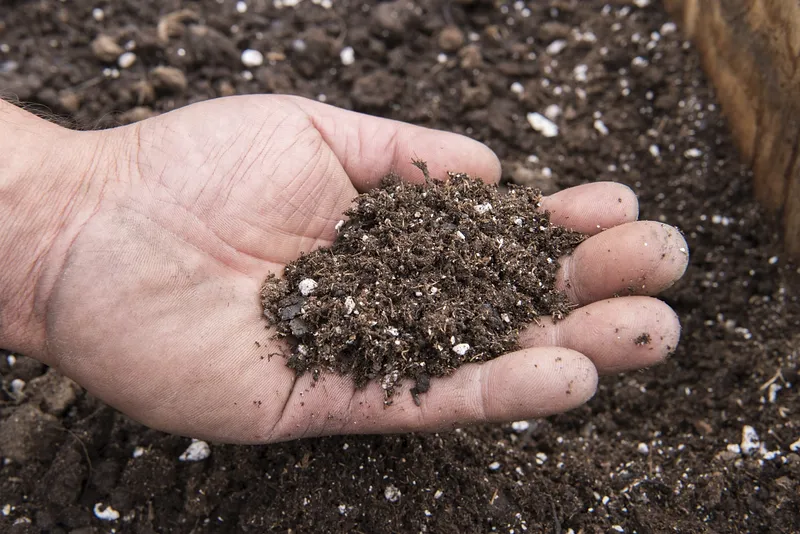
The Cherokee Princess Flowering Dogwood thrives in acidic soils amended with some humus or compost.
Furthermore, the tree needs well-drained soil allowing excess water to drain away from the root system. So, you can grow your trees in a loamy to sandy soil with a reasonably acidic pH.
Lighting Conditions For Dogwood Trees
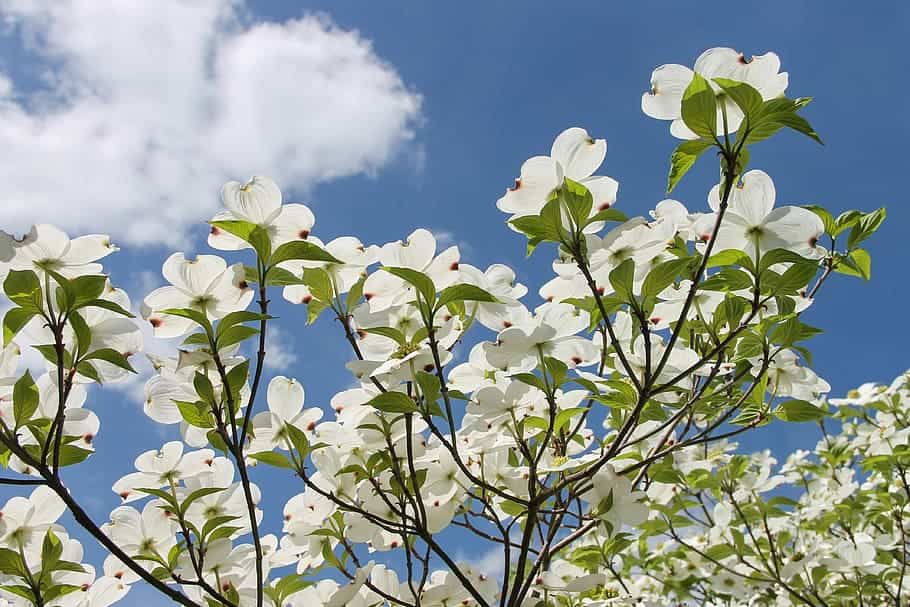
The best place to keep your Dogwood trees is in full sun to partial shade. Your trees need at least six hours of bright indirect light as it prevents the leaves from becoming crispy.
Watering Cherokee Princess Flowering Dogwood Trees
Your young Dogwoods require supplemental water during the first growing season, mainly if no rainfall exists.
But most importantly, your trees must not be in standing water. With wet feet, your tree will get root rot causing it to die.
The Dogwood tree has shallow roots, and regular watering helps to prevent the roots from drying out.
Temperature and Humidity
The Cherokee Princess thrives in the growing zones 5-8, but according to NASA, the temperatures should not drop below -15°F. Still, some cultivars, like the Red Osier Dogwood trees, can tolerate freezing temperatures below this.
Fertilizing Dogwood Trees
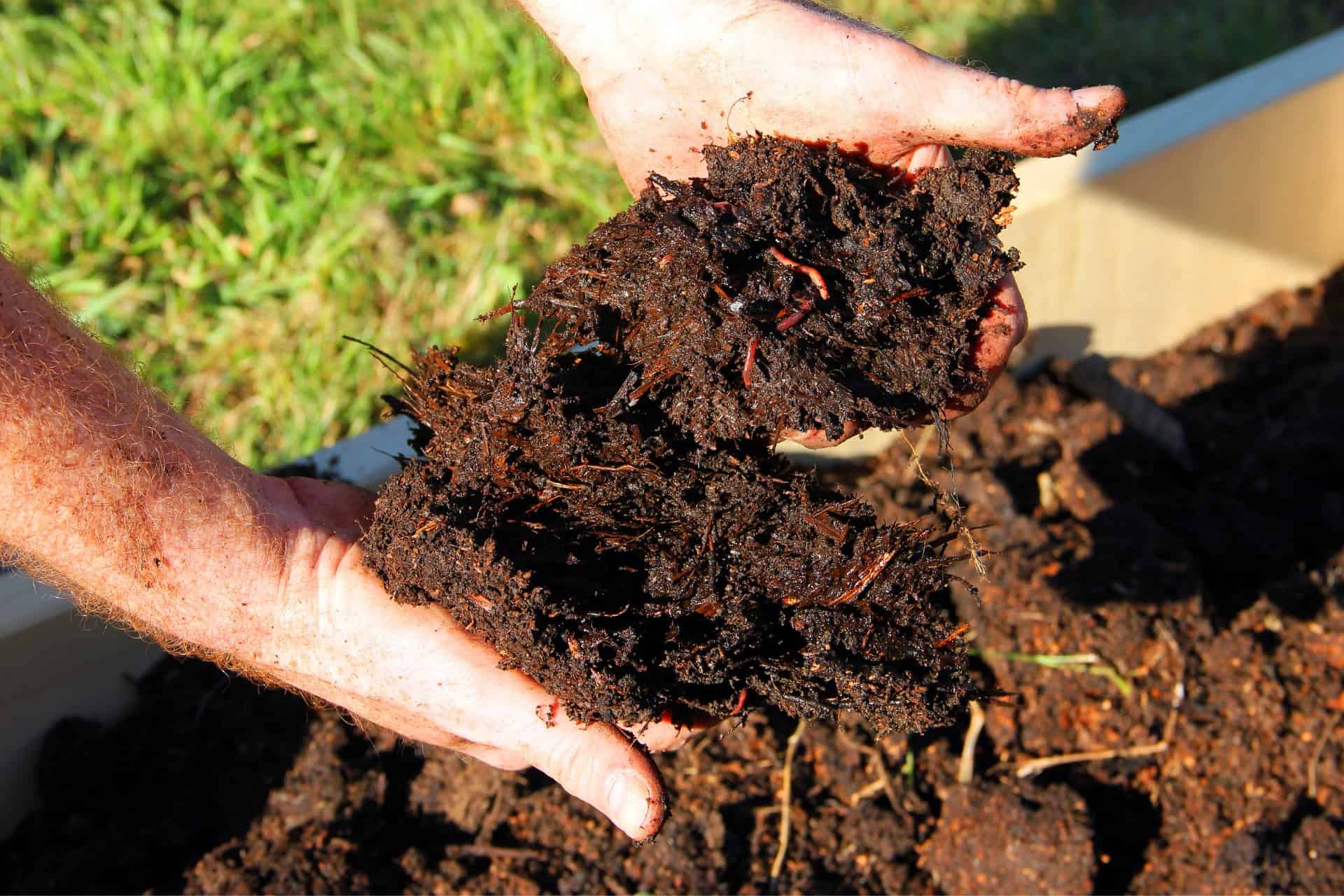
For your larger trees, you can fertilize twice a year in spring and the fall using balanced shrubs or tree slow-release fertilizer. To increase the soil quality, you can dig a hole where your Cherokee Princess is planted to add compost and mulch.
Pruning Cherokee Princess Flowering Dogwood
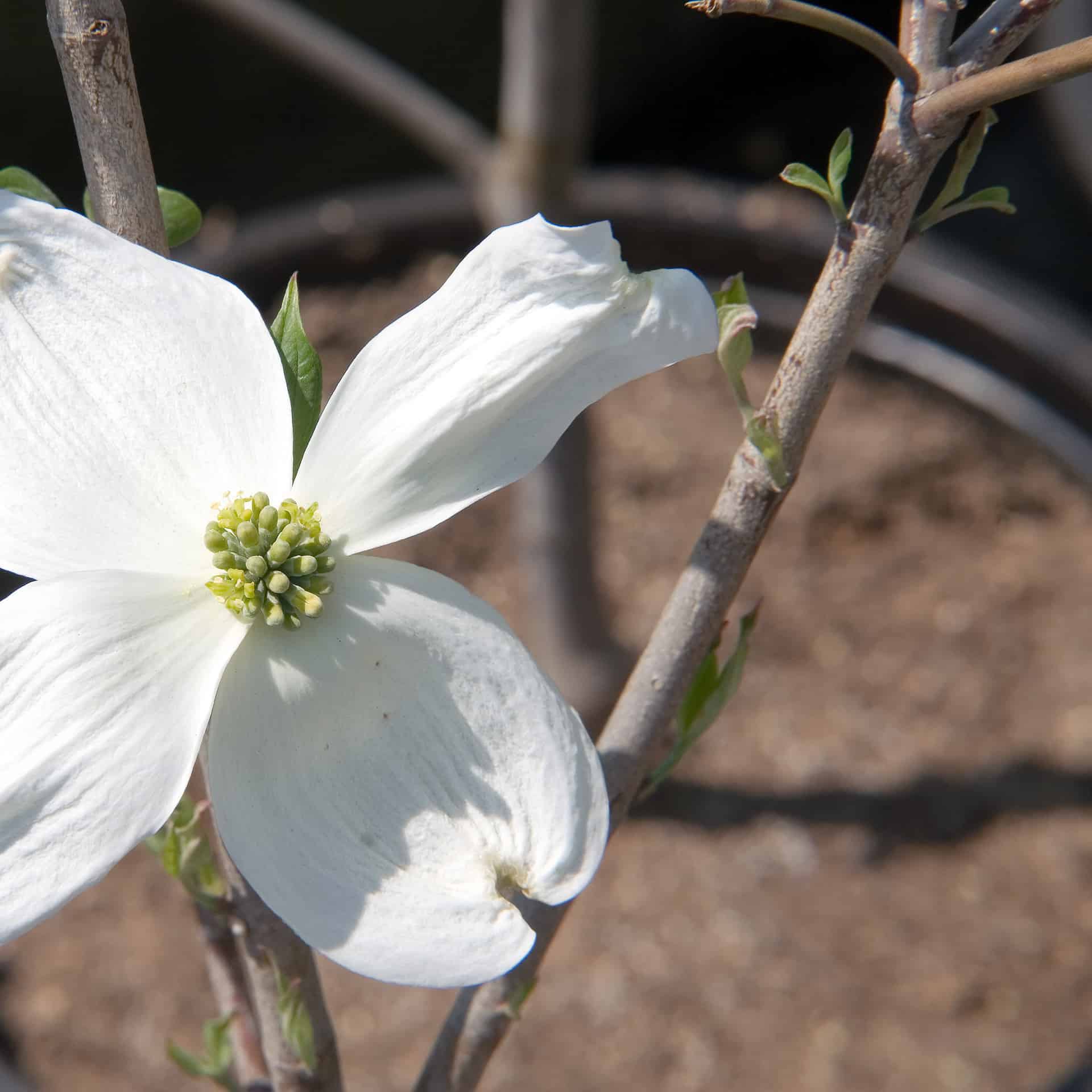
The best time for pruning is after the white flowers fade and your tree becomes dormant in late summer as it will not bleed sap. You can eliminate the injured branches or insect-infested parts of the tree.
Removing dead or injured branches allows for new growth in spring.
Propagation of Cherokee Princess
The best method to propagate your Dogwood trees is with cuttings after the flower cycle. Dogwood trees generally bloom from spring to summer. Another notable thing is to take a few cuttings, as it is not always successful.
Ensure that the cuttings are at least five inches long, and make a cut an inch below a set of leaves. Then lay the cuttings in a basin lined with damp paper towels to cover with another wet towel.
Once you take your cuttings, remove the bottom leaves and dip the cut end into the rooting hormone.
Then cut the remaining leaves in half to prevent them from touching the soil.
Fill a container about 3 inches with potting soil or mix perlite and sand. Berry the stem about 1.5 inches deep into the potting medium.
Mist your cutting with water and place the container inside a plastic bag with some poked holes for air circulation.
Check your cutting once a week for new growth and a root system. Once root systems are developed, remove the plastic covering and place it in a sunny spot.
Keep your container plant moist at all times, and once the sapling outgrows the pot, you can transplant it to a larger one to move to the garden later.
Cherokee Princess Flowering Dogwood Varieties
In the landscape, you can find other spectacular varieties in the Cherokee Dogwood trees.
Cloud 9
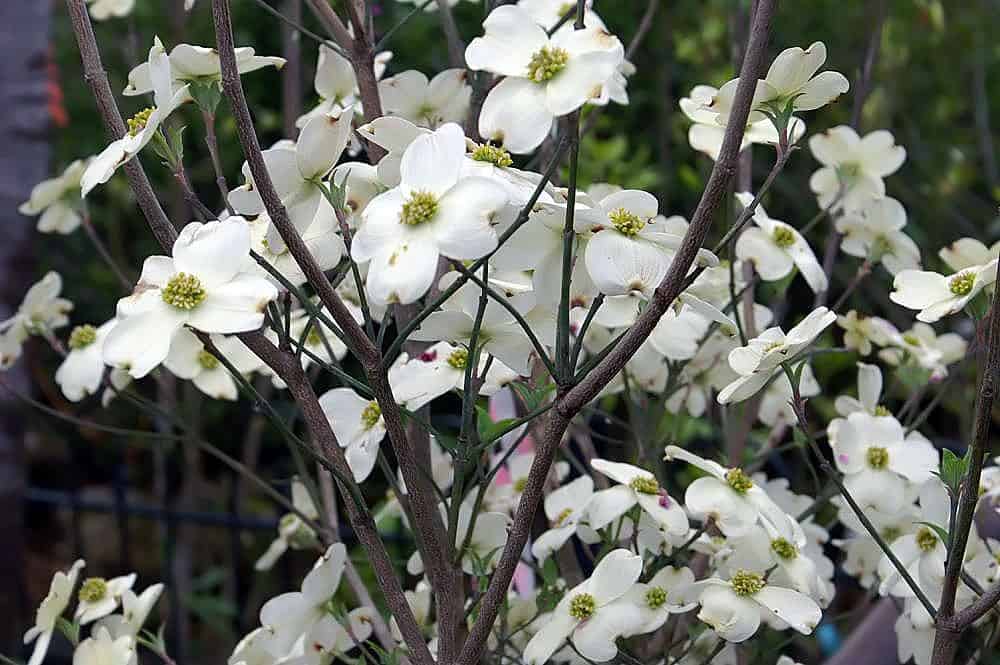
The Cloud Nine can grow up to 35 feet tall with a spread of 35 feet. It grows best in hardiness zone 5b. The Dogwood trees display large white blooms in spring on white bracts found atop branches.
The deciduous foliage starts burgundy turning to brick red in the fall with red berries in winter and gray bark.
Cherokee Brave
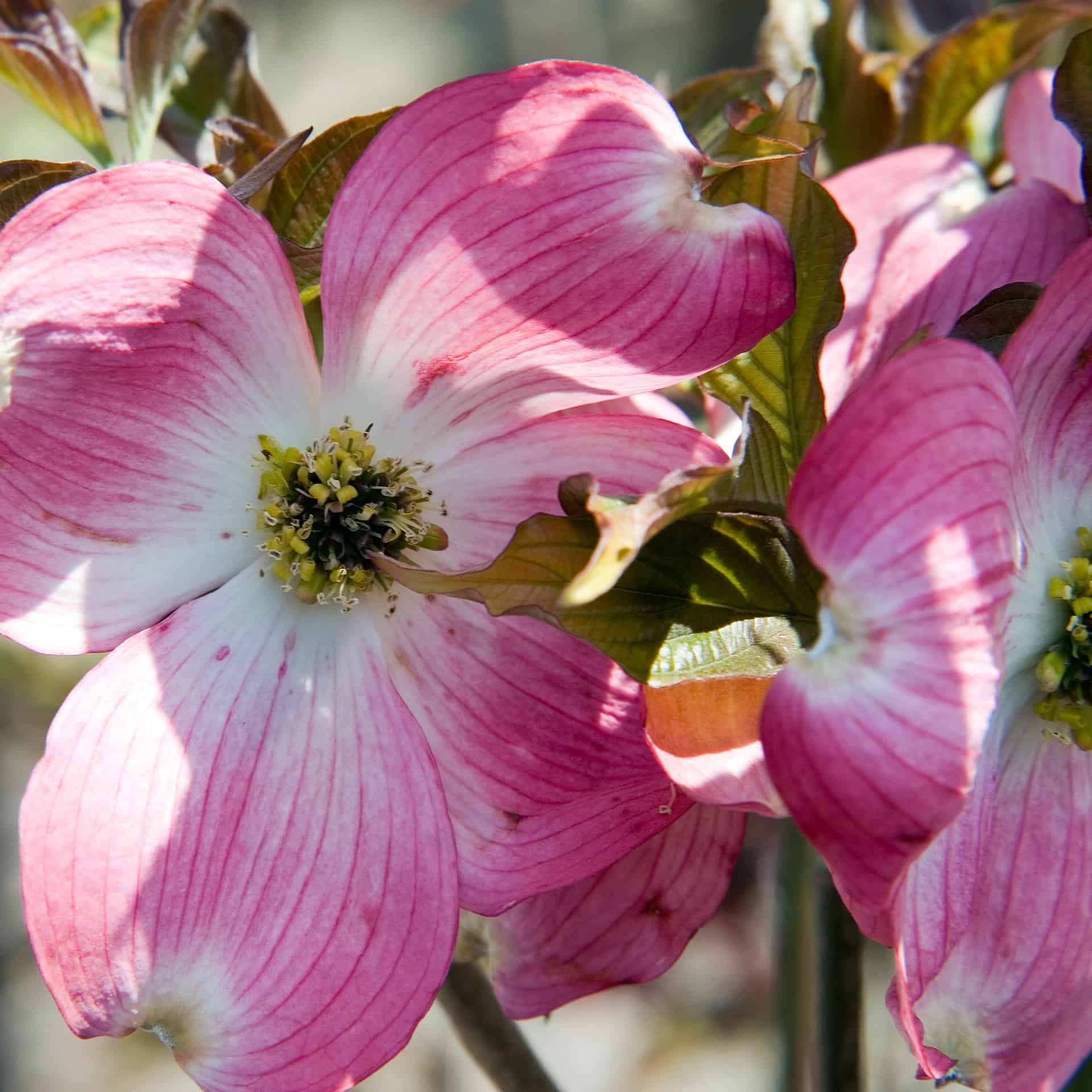
This dogwood can grow up to 35 feet with a spread of 35 feet and is hardy in growing zones 5. It is a beautiful ornamental plant blanketed with red flowers in spring, fading to a white color. The foliage starts burgundy in spring, turning red in the fall, followed by red berries.
Cherokee Chief Flowering Dogwoods
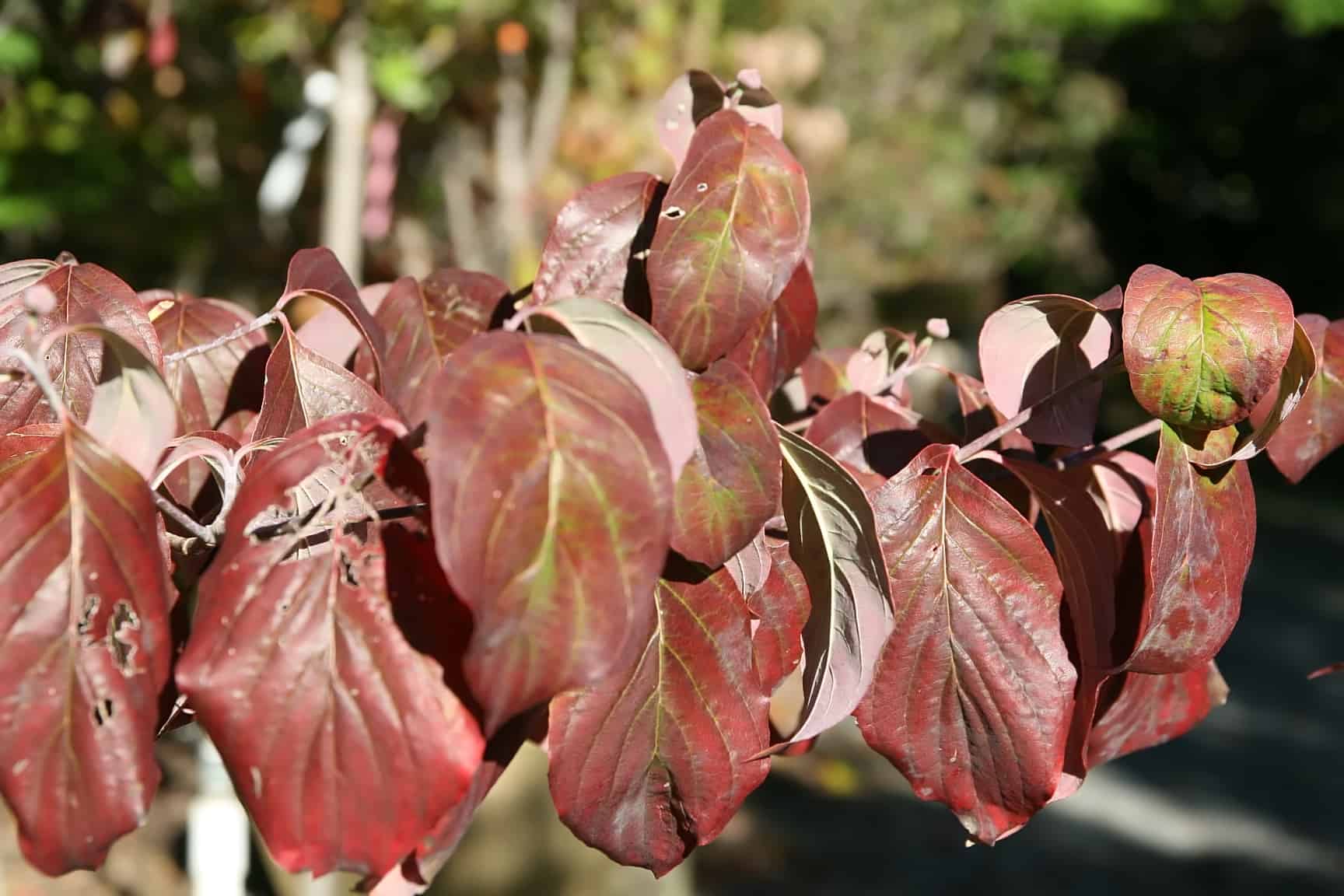
Like other Dogwoods, the Chief grows up to 30 feet tall with rose flowers and white centers in early spring. The tree has a yellow variegated to forest green foliage starting burgundy and turning red in the fall. It also produces berries in red.
Cherokee Princess Flowering Dogwood Common Diseases and Pests
Some concerns with Dogwood are aphids and powdery mildew. Still, applying a fungicide or horticultural oil can help prevent this from happening.
Another concern is the Dogwood Anthracnose fungus seen as light brown spots on the foliage spreading to the twigs and main branches to the trunk.
It helps to find a full sun spot with partial shade and ample air circulation to prevent the disease.
It also helps to keep the debris and leaves falling away from the trunk at the base by raking it away.
Frequently Asked Questions
The Dogwood tree makes for a great attraction year-round in the garden. But yes, once the berries drop to the ground, they can become messy.
The average lifespan of the Dogwood tree is 80 years under the right growing conditions.
To bloom and grow tall, the Dogwood tree thrives best in part shade compared to standing in full sun all day.
One story is that Christ was crucified on a flowering Dogwood, the Cherokee Chief, a small tree, as God no longer wants them to grow too tall to be used for a cross again.
The Cherokee you can find at most local nurseries, but you can place your plant orders here with Plantly to have it delivered to your door.
Whether you want to buy, sell, or simply reach out to other plant enthusiasts, Plantly is the right place to be!


